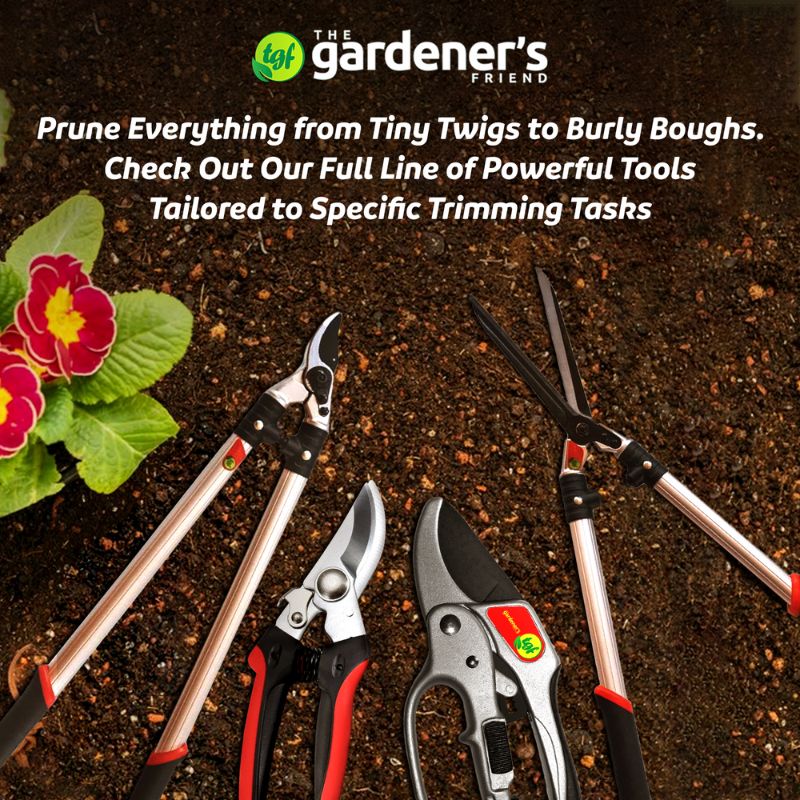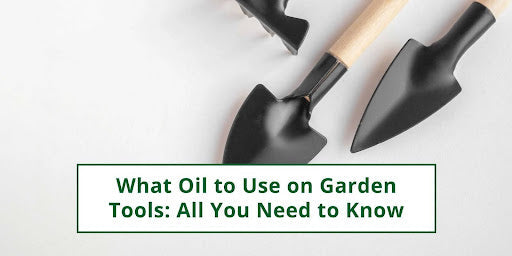A well-cared-for garden tool fits just right, feels sturdy in your hands, and does its job effectively. Whether you’re a seasoned gardener or just starting to like the hobby, your tools need to be in top shape to keep your garden safe and healthy.
An important question many gardeners ask is what oil to use on garden tools, so they don’t wear off, attract rust, or simply become ineffective.
This guide will walk you through the best options (Plus the ones you should avoid), so you don’t have to ask the question ever again.
Let’s dive in.
Why Is Oiling Important for Your Garden Tools?
If you’re reading this, you probably already know the importance of oiling your garden tools. Here are some prominent reasons to do it:
Fight Off Rust: Rust is the biggest enemy of every metal. Moisture from the soil, rain, or even humid atmosphere causes it. A thin layer of oil over the metal’s surface keeps water away, preventing rust formation.
Keeps Them Moving: Have you ever tried using stiff pruning shears? Oil acts as a lubricant for all the moving parts, allowing smooth gliding motion.
Make Them Last: Regular oiling prevents rust and keeps tools in good working order for a long time.
When to Oil Your Garden Tools?
You don’t need a strict oiling schedule. Just make sure they’re well-oiled before you get them ready for the action before summer. Plus, lubricate them when you’re done with them at the end of the season before storing.
However, a better way to go about this is simply listening to your tools. If they feel gritty, look dry, or have spots, oil them up.
The Best Oils for Garden Tools
Here’s the good news: You don’t need any fancy oils to protect your tools. In fact, many common oils in an average household may work fine.
Mineral Oil
This is probably the safest option for the metallic parts of your garden tools, such as shears, trowels, and hand pruners.
Mineral oil is food-safe, so it’s a perfect option if you work with fruits and vegetables. It’s also easy to find and inexpensive. It creates a light layer on top of the metallic part, preventing rust formation. However, mineral oil isn’t the best option for wooden parts.
Light Machine Oil
A machine oil is a lightweight option for all the moving parts of your garden tools. You want to use it on the hinges of your pruners, the bolts of your loppers, and the axle of your wheelbarrow.
This keeps these parts well-lubricated, which keeps the tools from squeaking or getting stuck.
Camellia Oil
It’s a plant-based, non-toxic oil perfect for finer, high-quality tools, such as Japanese hand pruners. Camellia oil has been used in Japan for centuries to protect fine steel tools.
The oil can effectively fight rust and doesn’t leave a sticky residue on the surface. It’s a bit more specialized than other oils, but it is a great option for dedicated tool care.
Related: Carbon Vs. Stainless Steel Garden Tools
Boiled Linseed Oil
For tools with wooden handles, such as shovels, rakes, and hoes, boiled linseed oil is the top choice.
The oil doesn’t just sit on the surface; it gets deep into the wood fibers, nourishing the wood and preventing it from drying out, cracking, and rotting.
While buying it, be sure to get the boiled version instead of the raw one. Boiled linseed oil has been treated to dry and harden properly. It creates a durable protective layer. Raw linseed oil may not protect the wood as well.
Which Oils to Avoid and Why
Using certain oils or using the right ones in the wrong way can cause more harm than good. Here are a couple of landmines to dodge:
Heavy Grease: Thick grease can be messy and attract dirt. You want to stick to light oils for most garden tools.
Cooking Oils: While they seem like a quick fix, these oils can turn rancid over time. They get sticky and can attract pests. So, it’s best to stick to the oils discussed above.
The Art of Oiling Garden Tools: Step-by-Step Process
Tool maintenance is easy when you break the process into simple steps:
The Cleanse
Use a wire brush or steel wool to gently scrub away any dirt, rust, or debris on the metal. If the tool is too dirty, you can use soap and water to wash it.
The Application
Apply a light layer of linseed oil over the wooden part of the tool. Put a few drops of mineral oil on the metallic parts and wipe them along the metal. A couple of drops on the hinges will do the job.
The Wide Down
Once you’ve applied the oil, wipe off excess oil with a clean piece of cloth. You only need a thin layer of oil. Let wooden parts dry completely before storing the tool away.
Frequently Asked Questions
What Kind of Oil Do You Use on Garden Tool Handles?
Use boiled linseed for the wooden parts of your tools. It soaks into the wood, giving the handle a nice, durable finish and preventing rot and cracking.
Can You Use WD-40 to Clean Garden Tools?
Yes, you can use WD-40 to loosen stuck parts and remove rust from metals. However, it isn’t a long-term solution. You need to follow up with proper oiling for lasting protection.
Can I Use Olive Oil on Garden Tools?
Avoid using olive oil for long-term storage. It can turn rancid and sticky over time, which can attract pests and dirt.
What is the Food Safe Oil for Garden Tools?
Mineral oil is a food-safe option. It’s non-toxic and ideal for blades that might come into contact with fruits and vegetables.
Conclusion
The secret to keeping your garden tools in top shape even after years of pruning and digging? A little regular care! Oiling gives your tools the resilience they need to help you get the job done for a long time.
Just make sure to use the right oil for the job. For instance, boiled linseed oil for the wooden parts and mineral oil for the metallic ones. Avoid cooking oils as they can do more harm than good. Also, remember that oiling needs to be subtle; a light coat is all your tools need.
Read More: How to Maintain Pruning Shears


